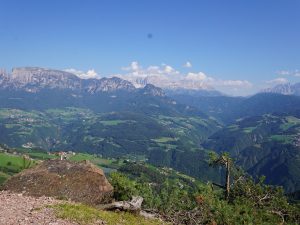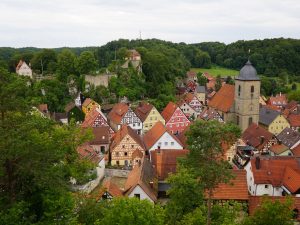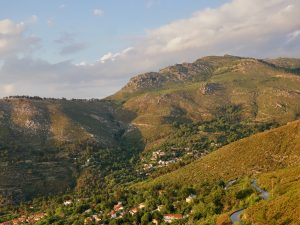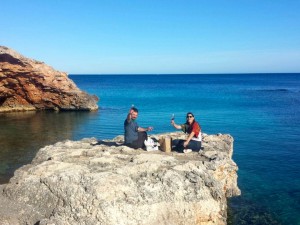Up and beyond: Going to Altihut 3014 on Kazbeg
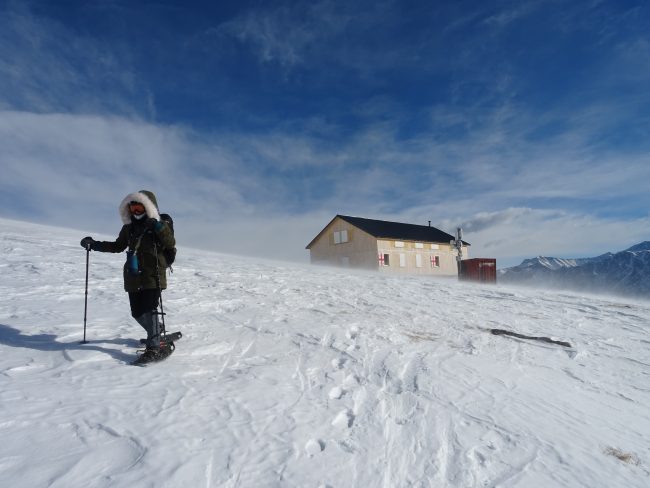
by Noémie Goldberg and Joerg Dauscher
The decision to take all the gear with us turned out to make sense: We were to use both, snowshoes and crampons. Without the snowshoes we would have not been able to manage the ascent through the high valley, the crampons we needed for the icy traverses. We had estimated a five hours climb maximum up to Altihut from 1700 to 3000 meters but it became almost six.
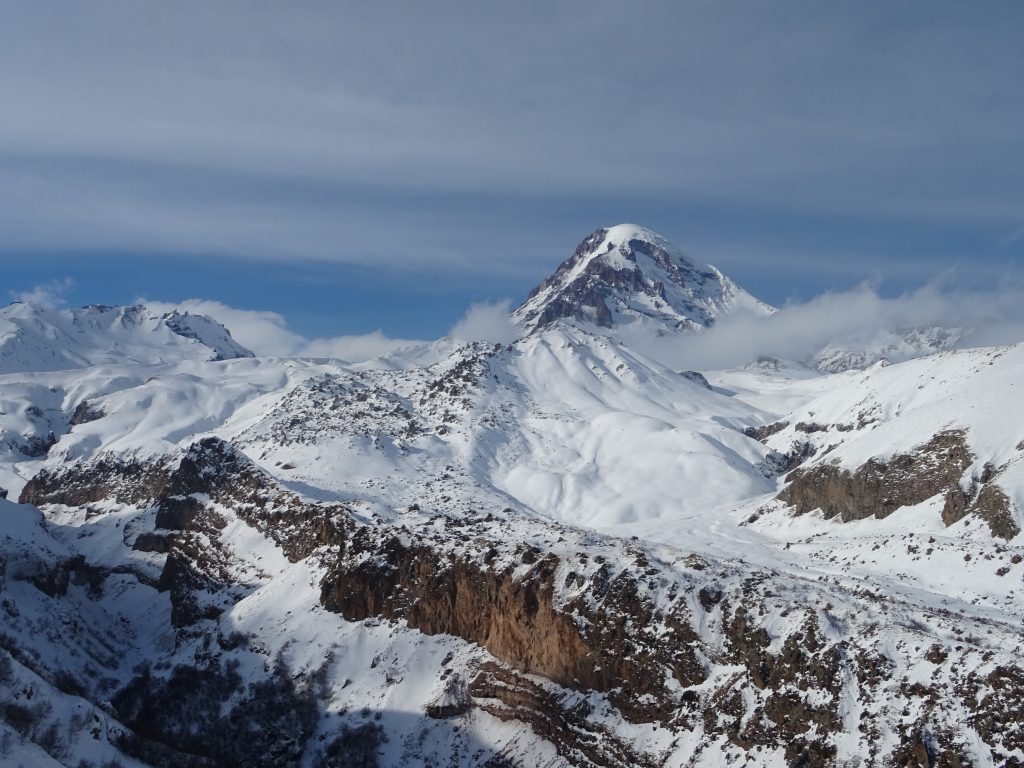
Mount Kazbeg (5033m) as seen from about 2500 meters up on the ridge
Altihut is situated at the very foot of Mount Kazbeg, near the glacier and overlooking a quite impressive canyon. The spot is frequently used for camping and resting before taking on the traverse of the glacier and going up further to the old Meteo station, to Betlemi hut on 3663 Meters. Altihut is all what Betlemi is not: new, warm, comfortable and somewhat luxurious. We had been invited there and the mountain hut was just about to open doors regularly for free riders, mountaineers and nature lovers.
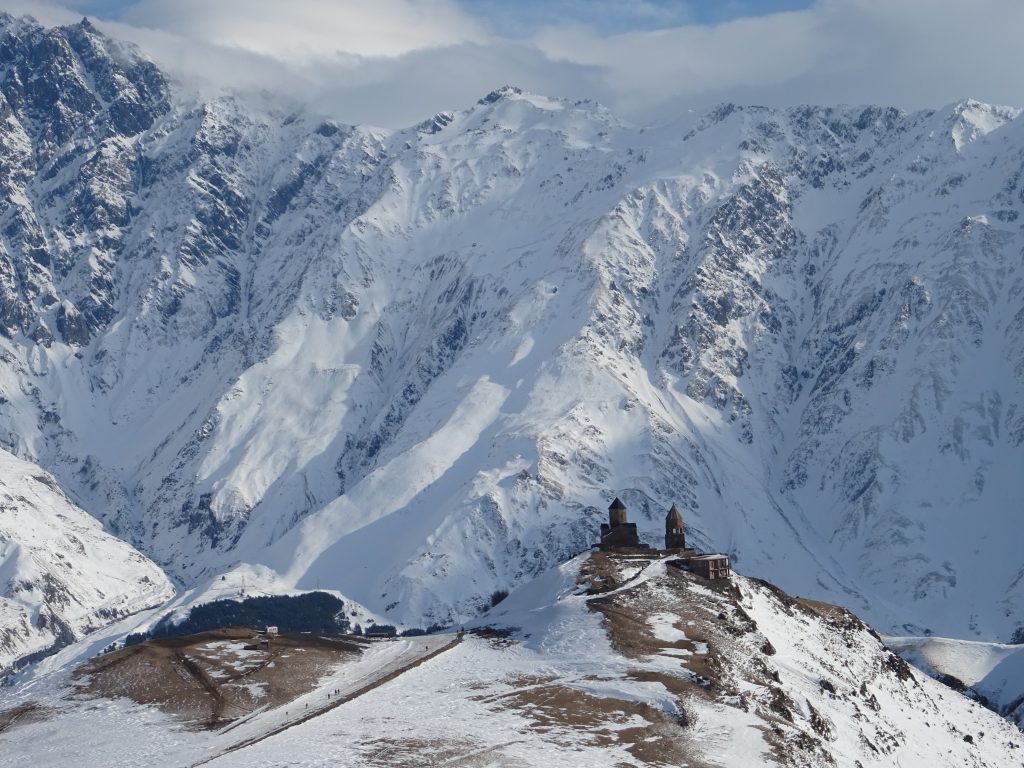
Gergeti Trinity Church
The weatherforecast wasn´t very comforting, predicting some snowfall and moreover heavy winds. But we were relying on the forecast’s unreliability, trusting our luck and our eyesight and went off for a not too early start. Upon leaving the village of Gergeti, Mount Kazbeg with his 5033 meters of elevation stood clear in front of us, in a winterly-babyblue morning sky. Only the snow flags from higher grounds indicated harsher conditions. So going up the first step to Gergeti Trinity Church was an easy task.
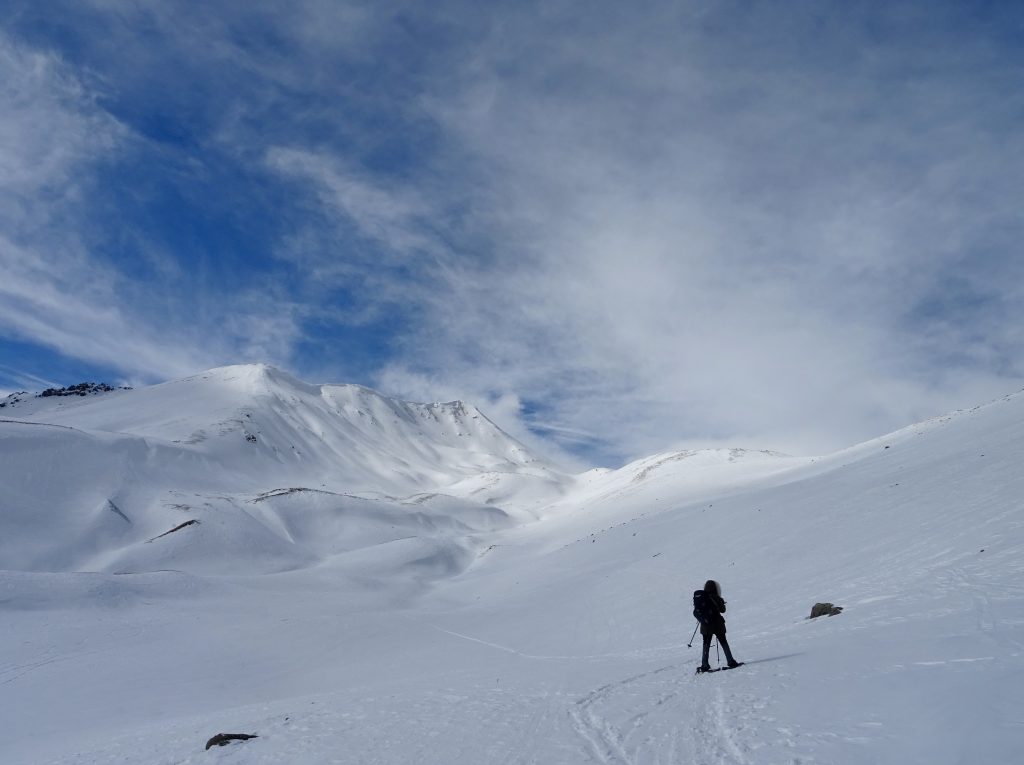
Going up to Sabertse pass
The second though, all the way to Sabertse Pass on almost 3000 meters, proved to be more demanding. But the real attack on our stamina came after the pass: crossing over steep icy slopes and covering some avalanche-endangered terrain.
The last kilometer resembled a windswept white-out, so it was with freezing feet and on the point of exhaustion that we finally arrived at the doors of Altihut. David, our host, welcomed us. He had arrived from Tbilisi on the very same day and had actually hiked up himself with skiers that very morning. Altihut only opens in winter when booked. Still the italian group of freeriders we were to stay with had left in the meantime, due to one of them falling ill. So we were incredibly lucky, not only to be up there at all, but moreover to have an entire evening to talk with David who is one of the three owners and Giorgi who runs the place on a daily basis.
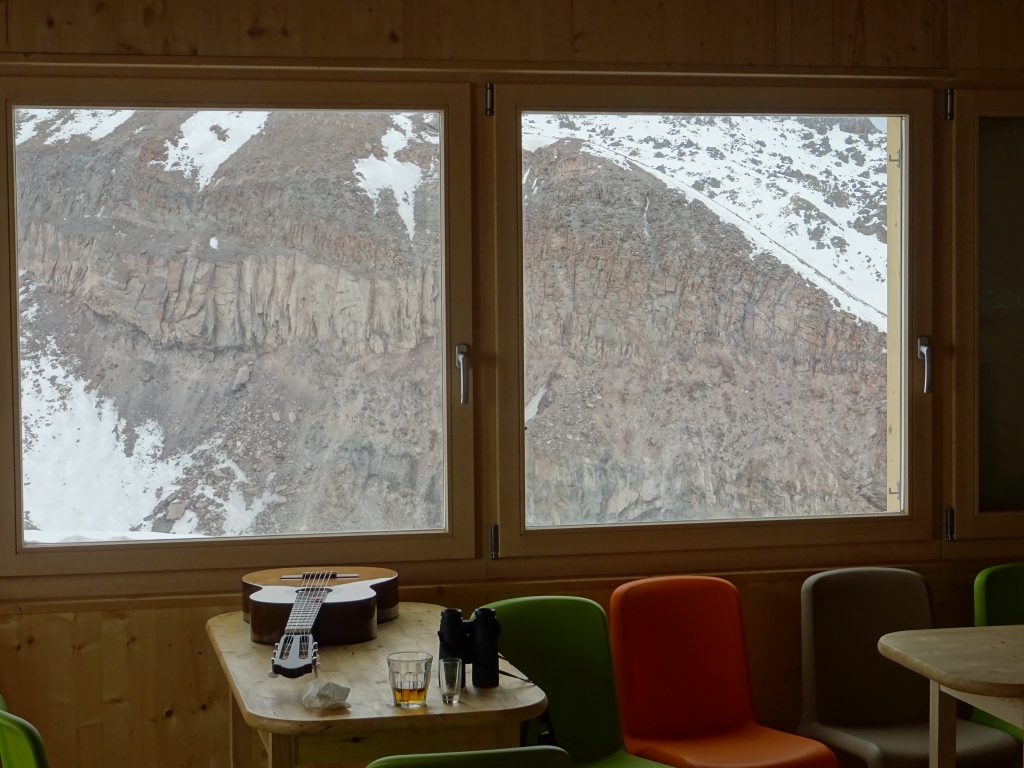
View over to the rocks of the canyon
David first showed us around the rooms, explaining construction-details and mentioning the day when the last panel for the roof was flown up.
“Yes, we had to fly everything up by helicopter! Every single thing.”
It is a private entrepreneur’s trio who came up with the idea of Altihut and eventually carried it out themselves. Neither was there support from government officials, nor were local authorities interested at all – despite those thousands of tourists who walk up to Kazbeg glacier every summer. Support came from abroad, from Switzerland: a specialist swiss helicopter-pilot volunteered to help out, some company donated the needed total of 3000 screws. The swiss carpenter Kurt Wandfluh had been involved in the whole process of planning and designing the hut and it was him, who inspired other swiss professionals and volunteers to come to Kazbegi and help.
“The foundations were built the year before, but the hut had to be assembled within a good weather period of only two weeks!” explained David, and continued:
“And you know what? On the second-last day, they suddenly told us that the helicopter we hired had to be back in Tbilisi by eleven the next morning, to transport some minister or whatever… We all got up at four in the morning, just to get the roof done in time and we did!”
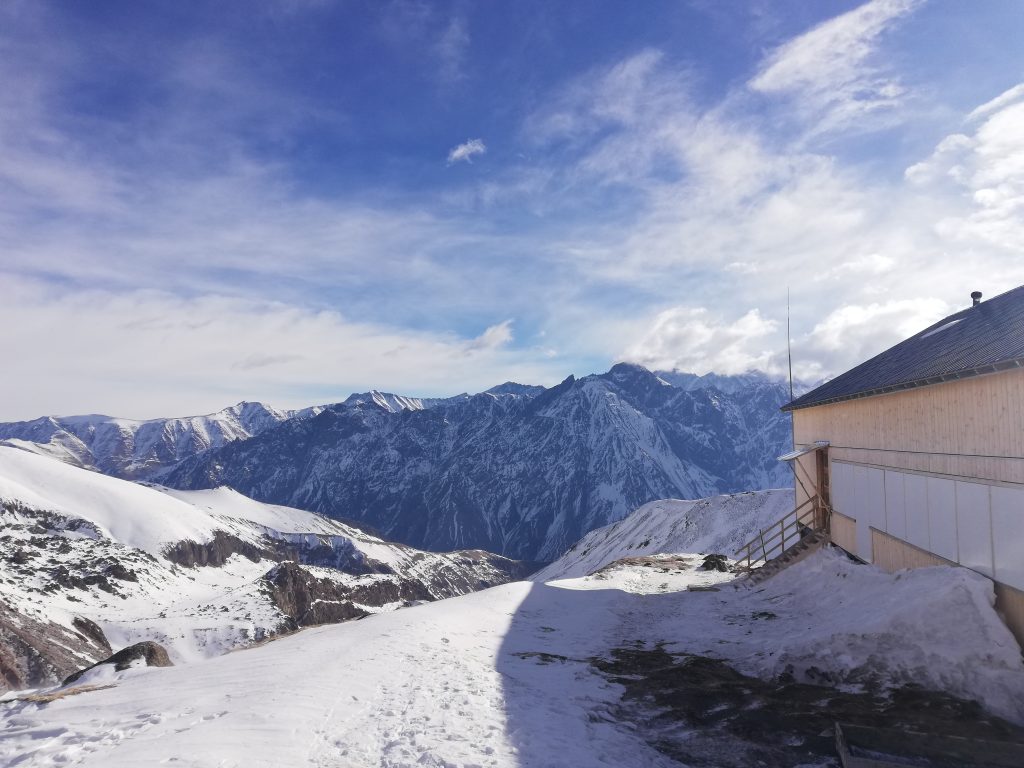
View from Altihut
As David explained, the hut itself doesn’t intend to be one of those fancy places targeting Russian-only or any other wealthy tourists in the region, but rather wishes to remain a safe place for mountaineers, hikers, climbers, whether they are professional or not. In fact, Altihut, which combines the functions of a hostel and restaurant, is actually quite simple in its own way – while being very comfortable for a mountain hut and that’s the whole paradox: Although the furniture is very basic and the walls nicely covered with colorful vintage-like posters, the owners set up a bright little library room which’s shelves are filled with multilanguage books, beside a Marshall amplifier that offers a great sound in the whole place, not to mention their coffee machine.
And in order to make it a safe place there are certain rules to respect in the house, the main one controlling the consumption of drugs or alcohol and thus the vivid political debates that usually follow.
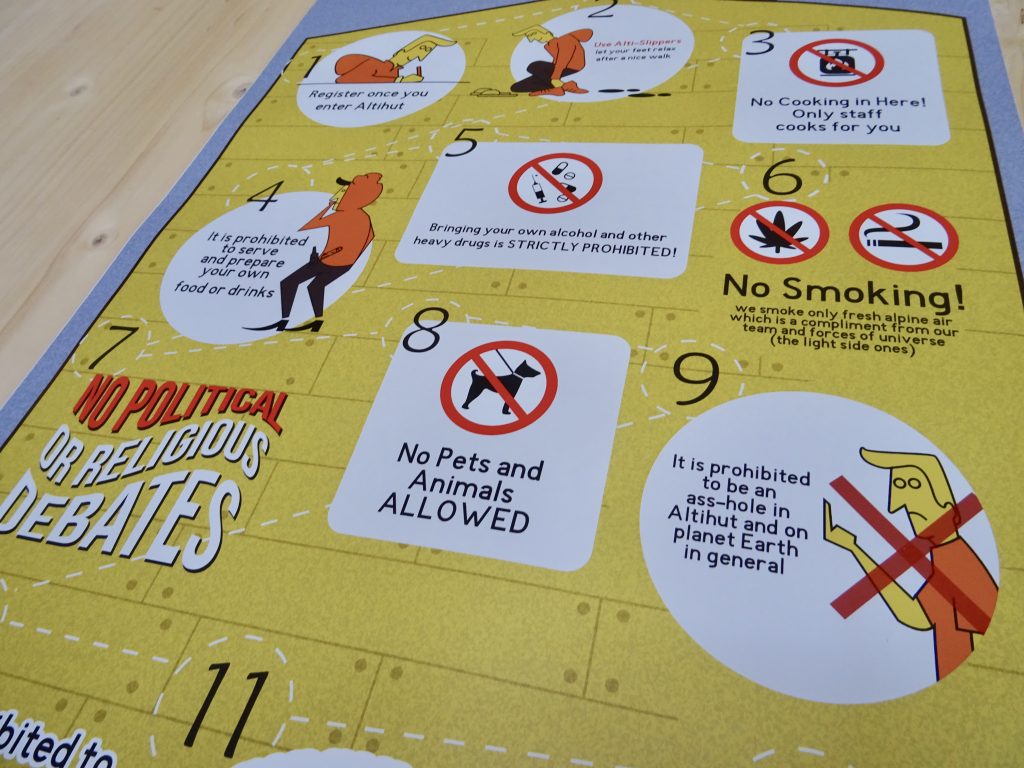
Here are the rules: Just don´t be an Asshole, nowhere!
The preservation of nature is also an important issue for Altihut’s owners, and that is the reason why they ask their guests not to “lift up a stone and put their stuff underneath”. Instead, any hiker passing by should keep their own garbage until they are back down in the village, where the rest is unknown. As for the garbage produced by Altihut itself, horsemen are regularly paid to take it down with them.
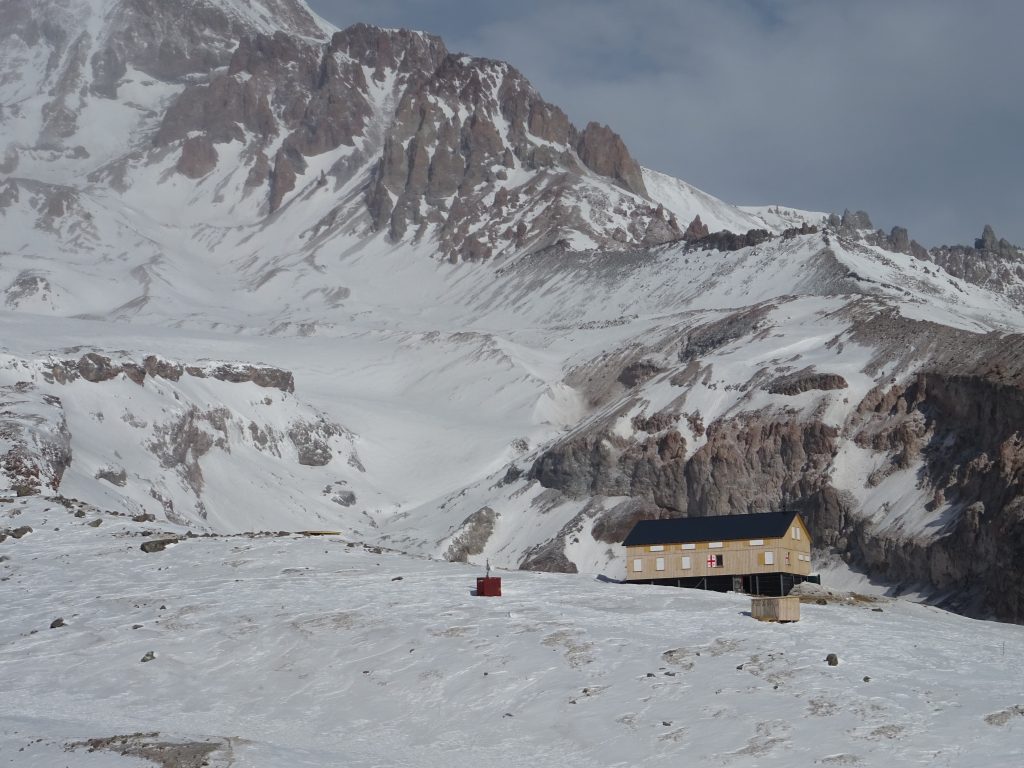
Going down, view back to Altihut 3014
The maintenance of Altihut is quite expensive. Fuel for the oven, groceries for the kitchen, drinks and general supplies have to be flown up throughout the year: The helicopter carries a mere 830 kgs of material, charging 700 € per flight. This and the costs of construction itself sum up what Altihut needs to charge for an overnight stay: 100 €. What seems to indicate exclusivity is a necessity.
But let’s not forget that after all, Altihut is an exclusive thing: Having a hut just after Sabertse pass is pure luxury! Without Altihut we would have not even dared going up that far and we would have missed two glorious days out on the mountain: So didi madloba David and Giorgi, didi madloba Altihut!


















